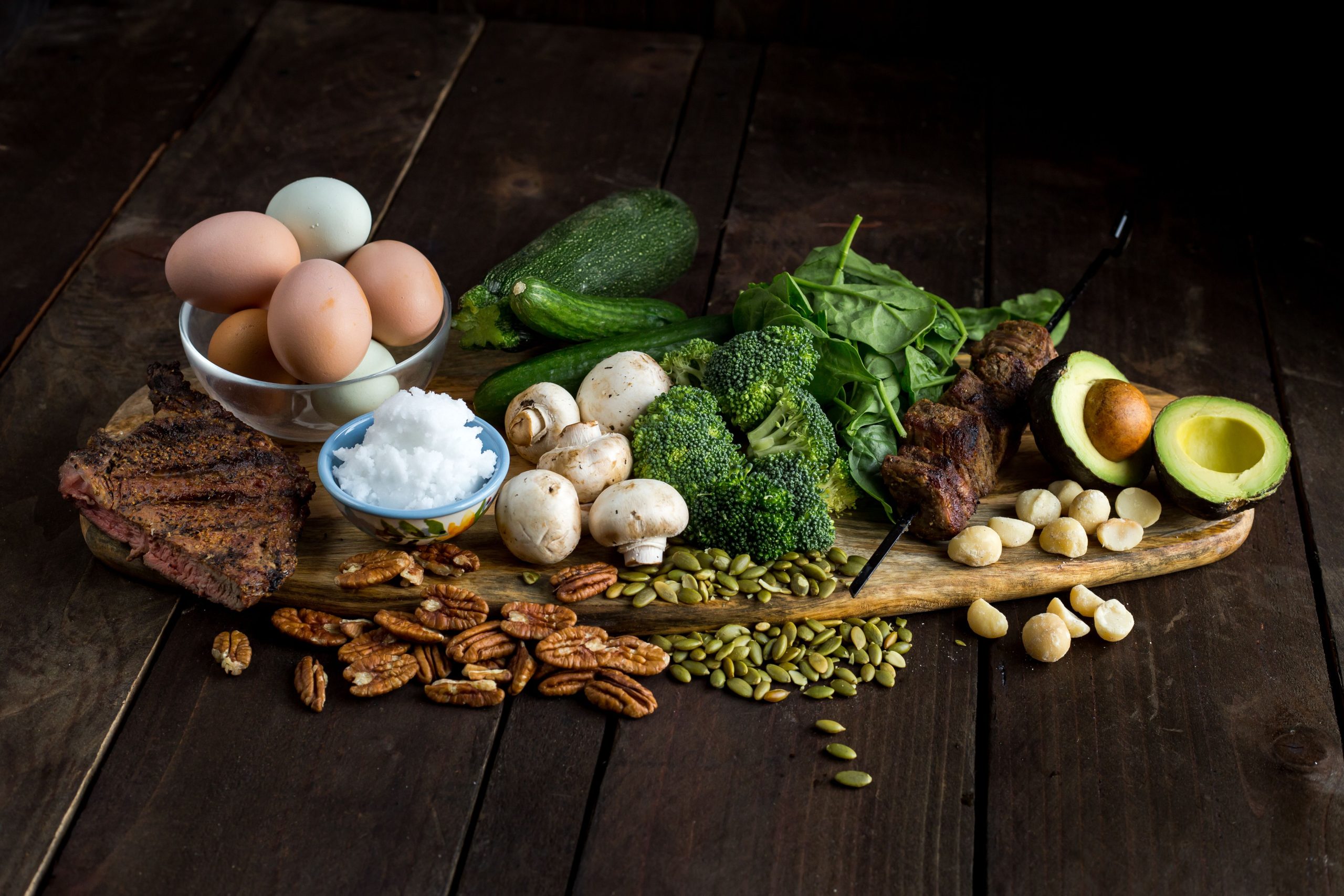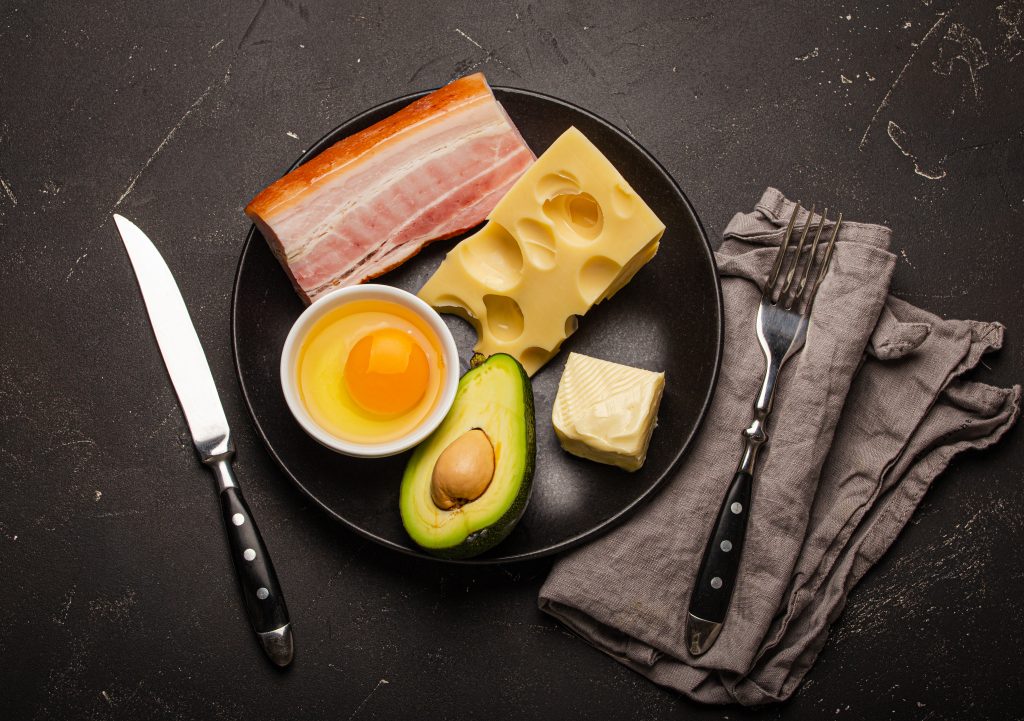Conquer Your Cravings: The Dirty Keto Diet Exposed
All Articles, Keto Diet
Table of Contents
- What Is the Dirty Keto Diet?
- The Dirty Keto Diet Food List
- Dirty Keto and Weight Loss: Can It Really Work?
- Keto Diet 2.0: A More Sustainable Approach?
- 2000 Calorie Keto: A Sample Meal Plan
- Pros and Cons of the Dirty Keto: Weighing the Evidence
- Is the Dirty Keto Right for You? The Verdict
- The Bottom Line: A Balanced Approach is Key
- References
The dirty keto diet has gained quite a buzz in recent years, drawing in those seeking a less restrictive path to weight loss and improved metabolic health. Unlike its “clean” counterpart, this approach prioritizes convenience and flexibility over food quality. But what exactly is the dirty keto diet, and is it a sustainable approach? Let’s dive into the details.
What Is the Dirty Keto Diet?
The dirty keto diet, also known as the “lazy keto” diet, adheres to the same fundamental principles of the standard ketogenic diet—high fat, moderate protein, and very low carbohydrate intake. However, it diverges significantly in its food choices. While the clean keto diet emphasizes whole, unprocessed foods like grass-fed meats, organic vegetables, and healthy fats (avocado, nuts, olive oil), the dirty keto embraces processed and convenience foods as long as they fit the macronutrient ratio.
Think fast food burgers without the bun, processed meats like bacon and sausage, sugar-free desserts and drinks, and even packaged “keto-friendly” snacks. The emphasis is on adhering to the macronutrient targets, not on the nutritional quality of the food. That’s why people often ask, “What is the dirty keto diet?” because it seems to go against the grain of traditional healthy eating advice.
The Dirty Keto Food List
Here’s a glimpse into what a dirty keto food list might look like:
| Food Category | Examples |
|---|---|
| Processed Meats | Bacon, sausage, hot dogs, deli meats |
| Fast Food | Burgers (no bun), fried chicken (no breading), bacon cheeseburgers (no bun) |
| Cheese | Processed cheese slices, full-fat cream cheese, cheese sticks |
| Sugar-Free Products | Diet soda, sugar-free candy, sugar-free desserts |
| Oils and Fats | Vegetable oils, mayonnaise, butter |
| Nuts and Seeds | Peanuts, almonds, sunflower seeds |
This list is far from exhaustive, but it gives you a good idea of the types of foods you can expect to find on a dirty keto diet. This diet is not about gourmet meals; it’s about finding dirty keto options that fit your lifestyle.
Dirty Keto and Weight Loss: Can It Really Work?
The dirty keto diet, like the standard ketogenic diet, can lead to weight loss. By drastically reducing carbohydrate intake, your body enters a state of ketosis, where it burns fat for fuel instead of glucose. This can result in rapid initial weight loss, making it an appealing option for those seeking quick results.
A 2018 study published in the Journal of Clinical Lipidology found that a very low-carbohydrate ketogenic diet led to significant weight loss and improvement in cardiovascular risk factors in obese adults. However, it’s important to note that this study focused on a well-formulated ketogenic diet, not specifically the dirty keto diet.
Keto Diet 2.0: A More Sustainable Approach?
The keto diet 2.0 is a modified version of the standard ketogenic diet that allows for a slightly higher carbohydrate intake. This approach may be more sustainable for some individuals who find the strict carbohydrate restriction of the traditional keto diet or the processed food focus of the dirty keto diet challenging.
The keto diet 2.0 still emphasizes healthy fats and moderate protein intake, but it allows for a wider variety of vegetables and some fruits, making it a less restrictive option. Some people consider keto diet 2.0 a way to transition from a dirty keto diet to a cleaner version. This flexibility may make it easier to adhere to the diet long-term, leading to sustained weight loss and improved health markers.
2000 Calorie Keto: A Sample Meal Plan
A 2000 calorie keto diet is a personalized plan that aligns with the macronutrient ratio of the ketogenic diet while providing a sufficient amount of calories to maintain energy levels and support daily activities. The exact macronutrient distribution may vary depending on individual needs and goals. A 2000 calorie keto diet could be a starting point for someone transitioning from a standard American diet to a dirty keto diet or even the keto diet 2.0.
| Meal | Food Options |
|---|---|
| Breakfast | Bacon and eggs, sausage and cheese omelet, keto coffee |
| Lunch | Burger salad (no bun), tuna salad with avocado, chicken thighs with vegetables |
| Dinner | Steak with asparagus, salmon with broccoli, pork chops with cauliflower rice |
| Snacks | Nuts, seeds, cheese, hard-boiled eggs, avocado |
This is just a sample plan, and you can customize it to fit your preferences and dietary needs.

Pros and Cons of the Dirty Keto: Weighing the Evidence
Like any diet, the dirty keto diet has its advantages and disadvantages. Let’s take a closer look:
| Pros | Cons |
|---|---|
| Convenience and Flexibility | Nutrient Deficiencies |
| Rapid Initial Weight Loss | Long-Term Sustainability Challenges |
| Improved Blood Sugar Control (Potential) | Potential Health Risks from Processed Foods |
It’s important to weigh these factors carefully before deciding if the dirty keto diet is right for you.
Is the Dirty Keto Right for You? The Verdict
The dirty keto diet may be suitable for some individuals who prioritize convenience and flexibility over food quality. However, it’s important to weigh the potential risks and benefits before embarking on this dietary approach. If you have any underlying health conditions, it’s crucial to consult with your doctor or a registered dietitian to determine if the dirty keto diet is appropriate for you. If you’re wondering, “What is the dirty keto diet really about?”, it’s about finding a way to fit the ketogenic lifestyle into your busy life, even if it means sacrificing some nutritional quality.
If you’re looking for a more sustainable and health-conscious approach to weight loss and metabolic health, consider the clean keto diet or the keto diet 2.0, which emphasize whole, unprocessed foods and allow for a wider variety of nutrient-dense options.
The Bottom Line: A Balanced Approach is Key
In conclusion, the dirty keto diet is a controversial approach that prioritizes convenience over food quality. While it may lead to quick weight loss, its long-term sustainability and potential health risks raise concerns. Before adopting any dietary changes, it’s essential to consult with a healthcare professional to ensure it aligns with your individual needs and health goals. Remember, a balanced and sustainable approach to nutrition is key to achieving optimal health and well-being.
References
- Dashti, H. M., Mathew, T. C., Hussein, T., Asfar, S. K., Behbahani, A., Khoursheed, M. A., … & Al-Zaid, N. S. (2004). Long-term effects of a ketogenic diet in obese patients. Experimental and clinical cardiology, 9(3), 200.
- Bueno, N. B., de Melo, I. S. V., de Oliveira, S. L., & da Rocha Ataide, T. (2013). Very-low-carbohydrate ketogenic diet v. low-fat diet for long-term weight loss: a meta-analysis of randomised controlled trials. British Journal of Nutrition, 110(7), 1178-1187.
- Hallberg, S. J., McKenzie, A. L., Williams, P. T., Bhanpuri, N. H., Peters, A. L., Campbell, W. W., … & Volek, J. S. (2018). Effectiveness and safety of a novel care model for the management of type 2 diabetes at 1 year: an open-label, non-randomized, controlled study. Diabetes therapy, 9, 583-612.
Read more about keto diet in our blog